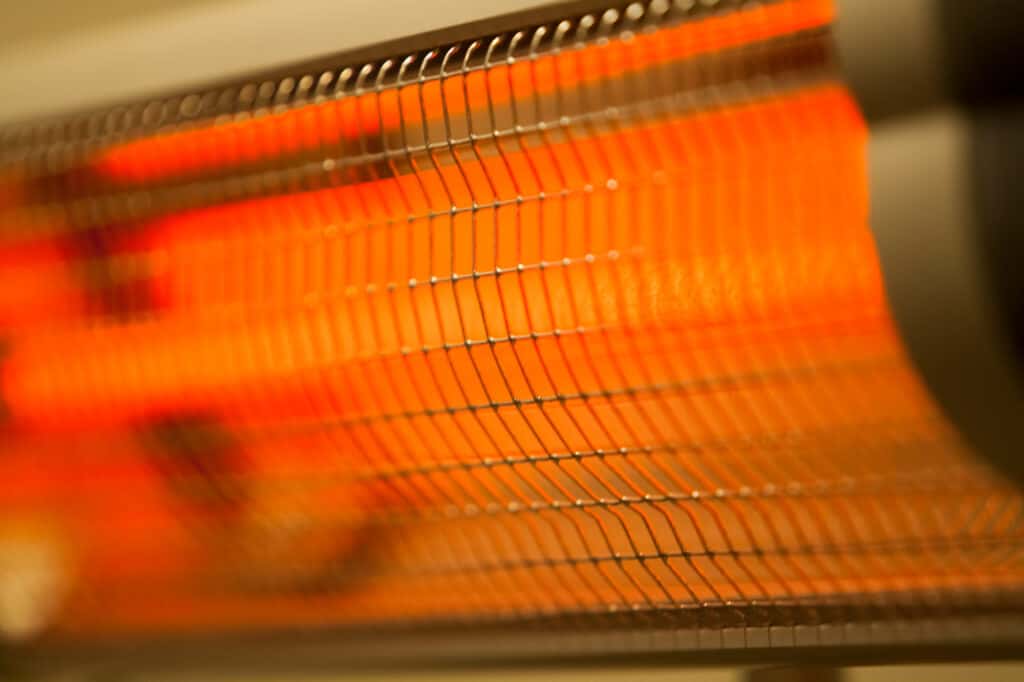Is there a need to know the wall heater fire safety?
The probability of a fire is low; however, as with any device that produces heat, there is always a potential fire hazard, mainly if the heater is not installed correctly or malfunctions.
Heating a small space without traditional radiator plumbing is easy with wall heaters.
Wall heaters are an effective tool for generating warmth through a heating element.
It is crucial to read and adhere to the instructions provided with your wall heater attentively.
It is important to avoid placing flammable objects near the heater, as this can increase the fire risk.
Read on to find out what measures you need to consider when purchasing a wall heater.

Table of Contents
Points to Consider Regarding Wall Heater Fire Safety
People often don’t realize that there are several factors regarding choosing the perfect wall heater and wall heater fire safety.
The first of these is power consumption; you should be aware that different heaters require different power, which is measured in watts.
The wattage of a wall-mounted heater is typically 1500 watts and can be found on the box or online specifications.
To calculate the cost of the wall heater, you just need to perform some basic calculations.
- To determine the amount of energy your heater consumes, simply multiply its wattage by the number of hours you intend to operate it.
- Multiply this figure by your energy supplier’s cost per kWh.
- Divide your heater’s total cost by 1000 to determine its daily cost.
When mounting your heater on the wall, ensure it’s not obstructed by a door or window.
You should ensure that the controls and thermostats are out of reach of small children by placing them at a height that is safe.
When fixing a wall-mounted heater, ensure you use appropriate fixings due to their weight. Additionally, never attempt to hang a heater alone.
It is important to never cover a wall heater with anything flammable. If the heater is covered, the heat can become intense and cause damage to the heater or even result in a fire.
If there is a fire, do not throw water on the electric wall heater as it can cause electrocution. Instead, it’s safer to turn off the electricity at the fuse box, call the fire department, and use a CO2 fire extinguisher if available.
A professional electrician should wire a wall heater into the main power supply unless it is a plug-in heater.
Make sure to route the wire for your mains-powered heater in a way that prevents hazards, such as snagging or tripping. Tack back any sagging wires.
Leaving a Wall Heater on Overnight
Wall heaters are versatile appliances that come in various sizes and shapes, making them suitable for any home.
They are also a popular choice for heating patios outdoors during the winter.
Most wall heaters come equipped with a thermostat that allows for operation within a set temperature range, and an automatic shutoff system that kicks in if the temperature exceeds safe limits.
Wall-mounted heaters have safety features that detect faults and prevent operation until repaired.
Your circuit breakers will also act to stop any power surge issues assisting with wall heater fire safety.
Leaving a wall-mounted heater on is unlikely to be dangerous, but it can dry out the air and cause headaches.
A portable heater should never be left unattended and turned on.
These heaters are designed to be used in monitored circumstances and do not have the same safety features as professionally fitted wall-mounted heaters.
If you opt to run a wall-mounted heater at night, it is imperative that you confirm that there is sufficient clearance around it. It is not at all safe to block or cover the heater, especially when utilizing it indoors.
Wall Heaters and Carbon Monoxide
Electric wall heaters do not produce carbon monoxide as no fuel is burned.
Electric heaters generate heat by running an electric current through a filament, producing infrared or thermal heat, which is then dispersed through a heat shield or reflector.
Using kerosene, gas, or oil space heaters requires regular professional checks for carbon monoxide emissions.
You should invest in a carbon monoxide monitor to detect emissions from your heater.
Related Reading: The Truth About Electric Heaters and Carbon Monoxide Poisoning: Best Insight
BEST CARBON MONOXIDE DETECTORS
Sleeping with a Gas Heater
You should never use a gas space heater in an enclosed space and definitely not while sleeping.
As mentioned earlier, carbon monoxide is an odorless gas that can be lethal if inhaled, as it starves the air of oxygen.
Only space heaters with a chimney should be used indoors.
Related Reading: Carbon Monoxide Poisoning: Unvented Gas Space Heating Appliances
Conclusion
Electric wall heaters have built-in safety devices to prevent fires. These wall heater fire safety factors help ensure your well-being.
Improper use or covering of the heater can cause fire. Remember, these wall heaters may not have a flame, but they do produce high temperatures for heating.
It’s important to never operate a gas heater while sleeping, ensure proper ventilation, and have it professionally maintained.
Following these wall heater fire safety measures will give you peace of mind while enjoying the warmth on a cold night.
Enjoy living the outdoor life!!!
